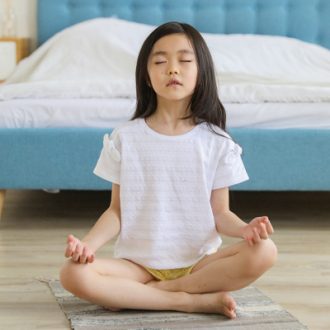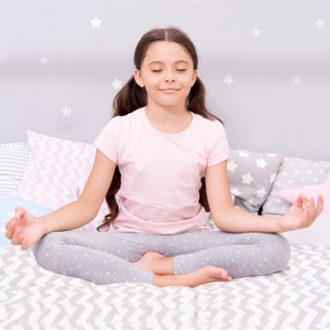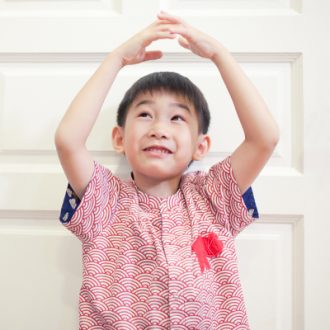
Mindfulness has been touted as the new yoga – the answer to mental wellness and all the stresses of modern life. What is it beyond the buzz?
Literally “living in the now”, mindfulness focuses on paying attention to the here and now – not what might have been or could be – in an accepting, non-judgmental manner. It may not be a silver bullet for all life’s ills, but it can help develop compassion, focus, curiosity, and empathy – and be lots of fun too!
How it helps
By starting children early, we give them the tools they need to build confidence, develop resilience, live with stress, and cope with challenging moments. The little ones are uniquely adapted to mindful practices due to the way our brains develop, but it’ll benefit anyone from preschoolers to high-powered executives. After all, no matter which stage of life we’re at, we could all do with a tool to decrease anxiety, increase focus and promote happiness.

It starts with you
Mindfulness isn’t something that can be outsourced, though. The best way to teach your child is to embody and model it.
As a family, sit or lie still for ten minutes or so, focusing on your breath and becoming aware of your body and surroundings. It establishes a sense of calm and encourages qualities such as empathy and gratitude. Even the very simple practice of encouraging Junior to stop whatever they are doing, and take three deep breaths in and out, can help return them to a place of greater focus.

You could also begin with a simple kindness meditation:
- Find a comfortable sitting position. Allow your eyes to close or lower your gaze toward the floor.
- Envision someone whom you really respect and look up to, and who loves you in return.
- Notice how you feel as you picture this person in your mind.
- Make a kind wish and send it their way. What would make them happy?
- Next, think of someone else you love and care about: a relative, friend or even someone you cared about a lot, but have lost touch with. Send this person a kind wish.
- Lastly, bring to mind someone who has frustrated you lately. Send this last person a kind wish – something nice to help ease their difficult path.
- Check in with your mind and body as you conclude, open your eyes if they’re closed, and see if there’s any difference in the way you feel. You should!
Or simply turn up the music and start dancing! Mindfulness is all about bringing your attention to the present, including sounds and sensations.

Here are some other ways you can practise mindfulness at home:
- Look for age-appropriate children’s books on what it means to focus on the present, and read them together. Examples would be Eline Snel’s Sitting Still like a Frog or A Handful of Quiet: Happiness in Four Pebbles, by Thich Nhat Hanh, a Zen monk.
- Reinforce mindfulness moments. Point out times when you use it to control anxiety or emotions.
- When your child seems anxious, encourage them to stop what they’re doing for a minute and notice how they feel.

Model forgiveness
As Junior grows older (and more independent), one of the most common challenges parents face is loss of control. And when setbacks occur, as they inevitably will, meeting these misfortunes with mindfulness is crucial.
Instead of getting hung up on the problem, note it and address it, but recognise that it is fleeting and will pass, as all things will. Forgive the little one if they have misbehaved – and if you’re blaming yourself, you should let that go too. After all, wisdom doesn’t come from being perfect. And when we take challenges in stride, our children learn as well to focus on solutions rather than the problems.
Remember, it’s easy – and even natural – for you to be buffeted by your child’s emotional roller coaster as they’re growing up. But staying in the moment – or simply remembering RAIN – can help you remain grounded.
- R: Recognise. Acknowledge what is happening. Note it in a calm and accepting manner.
- A: Accept. Allow life to be as it is. You’re not trying to change it, or wish it were somehow different.
- I: Investigate. See how it feels. Pleasure, pain or pang, just note it.
- N: Non-Identification. Realise that the sensations you are feeling are a fleeting experience, one that will soon pass. It isn’t who you are. Let it go.


